Today I finished reading ‘A Raw Youth’ by Fyodor Dostoevsky in the two volume Limited Editions Club set, no. 1124 of 2000, translated by Constance Garnett, with an introduction by Konstantin Mochulsky, and illustrated with wood engravings by Fritz Eichenberg, whose signature it bears.
Mochulsky begins his introduction by saying that “Because of its structural flaws, ‘A Raw Youth’ has been dismissed by some critics as an inferior work of Dostoevsky’s”. I agree with his estimate that the work is important for the themes familiar to as today as they were to Mochulsky when this edition was published.
Charles Dickens would have identified with the early life of the narrator, the self-styled “raw youth”, who grew up with no knowledge of his father and spends his coming of age striving to know and to share love with the man he now knows to be him.
The family is just one aspect of fractured society. The consequences of illegitimate birth, of which there were many resulting from extramarital relationships, and how these differentiate from those resulting from the marriage; children reared by substitute parents in differing circumstances; poor health; questionable morals; gambling; the position of religion; competition; trust – these are issues occupying the minds of many today. (Roughly 50% of all marriages in England today end in divorce, with breakdown of home life for the children, and reconstituted families)
Dostoevsky’s descriptive powers and the natural fluidity of his dialogue; his insightful characterisation, dramatic pace and tight time scale are well conveyed. The secret letter is a good device to add a sense of mystery. The work builds nicely to its dramatic finale and ties all loose ends in its conclusion
One irritating aspect is the author’s repetitive statements about detail he would come to later, keeping me on the lookout for when that would be. I considered myself fortunate that I could understand the amount of French dialogue, but presume that this reflects intellectual backgrounds of the protagonists.
I was grateful for the comprehensive cast list, ‘The Chief Characters’ given at the beginning of each volume.
I found the informative introduction most useful, especially in putting this novel in the context of Dostoevsky’s more famous works.
Not knowing the Russian Language I cannot assess the accuracy of the translator, but credit for the easy flow of the prose with its English idioms must be given to “Constance Garnett, née Constance Clara Black, (born December 19, 1861, Brighton, East Sussex, England—died December 17, 1946, Edenbridge, Kent), English translator who made the great works of Russian literature available to English and American readers in the first half of the 20th century. In addition to being the first to render Dostoyevsky and Chekhov into English, she translated the complete works of Turgenev and Gogol and the major works of Tolstoy.” (https://www.britannica.com/biography/Constance-Garnett)
The artist’s sculptural illustrations with their mastery of light and shade, characterisation, and emotional content are faithful to the text.
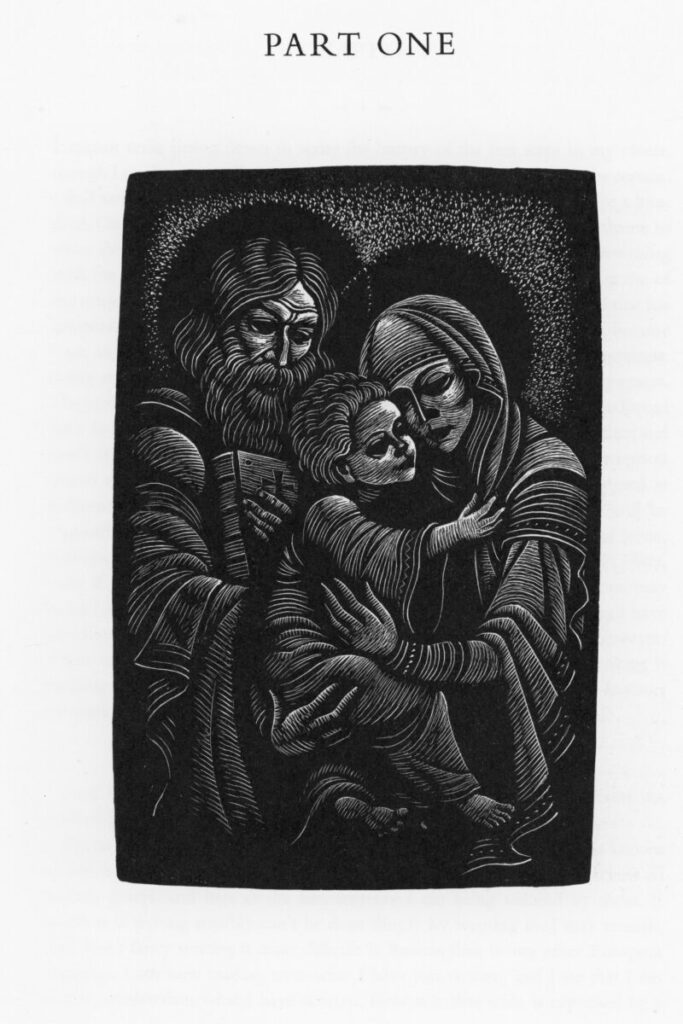

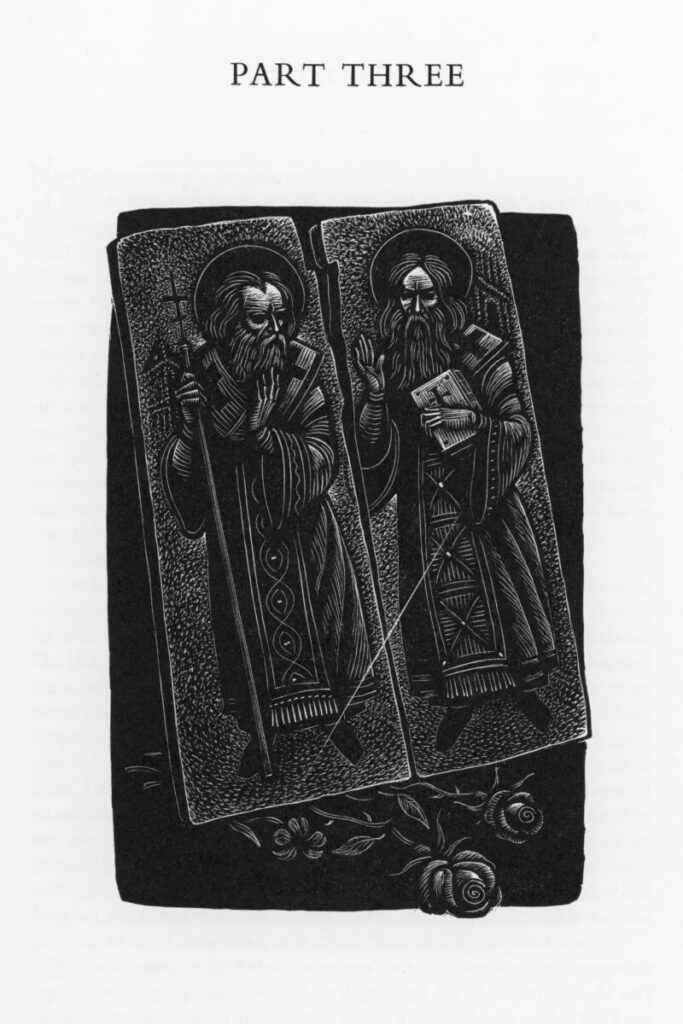
Each of the three parts has a frontispiece

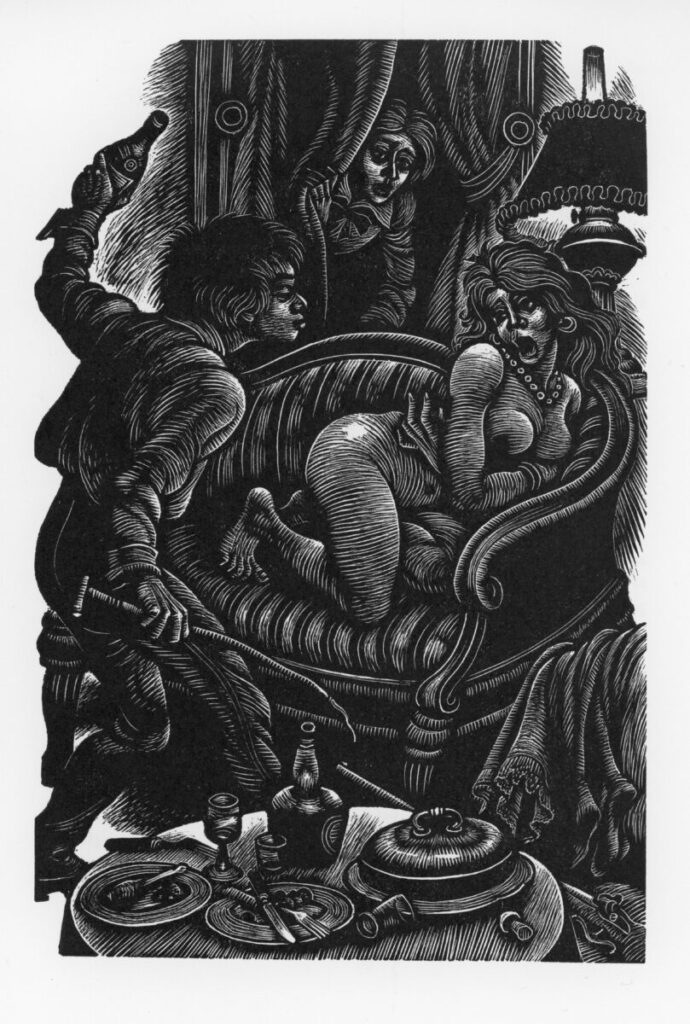
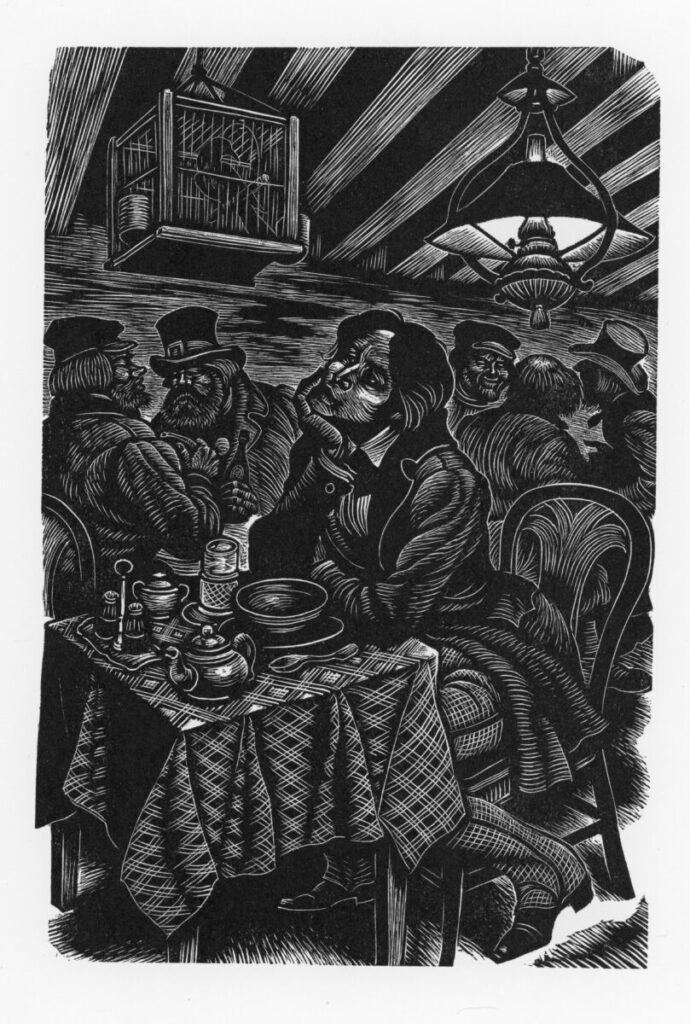
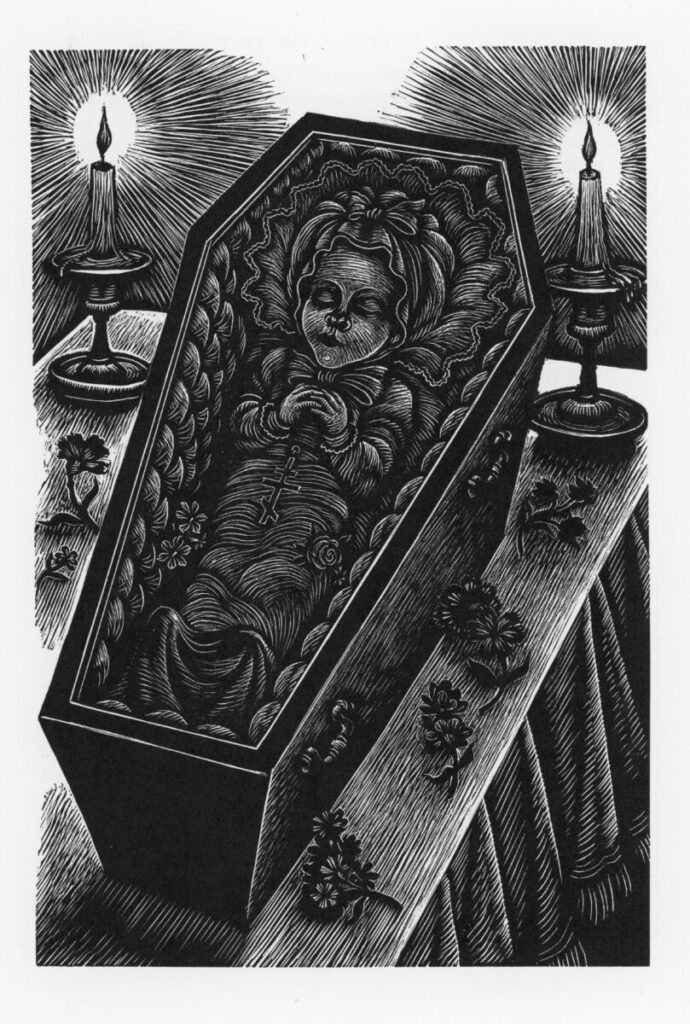
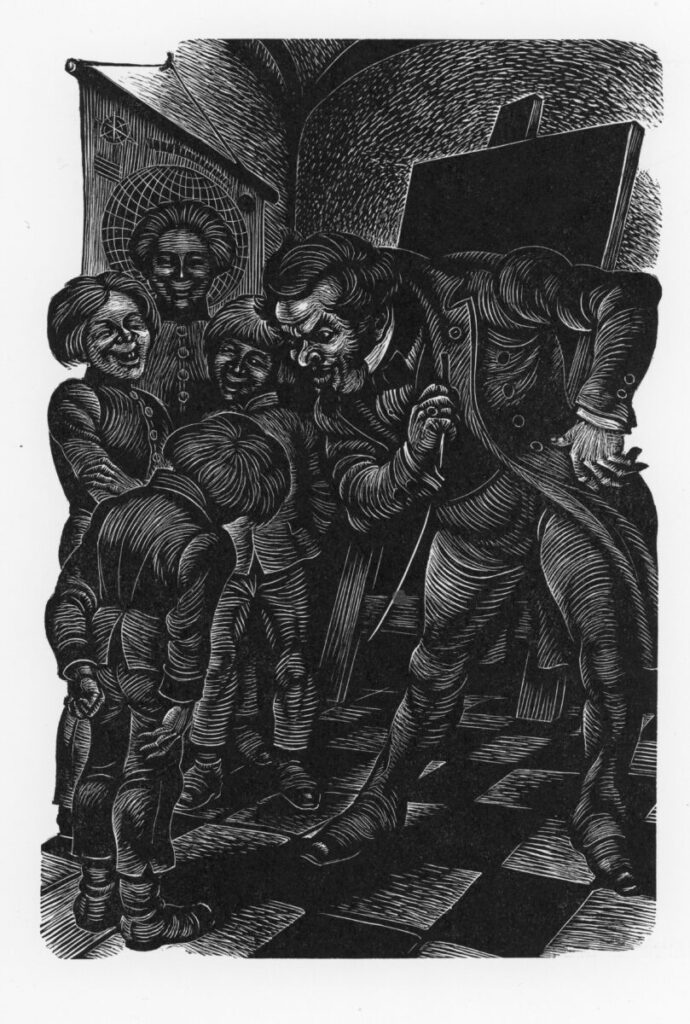

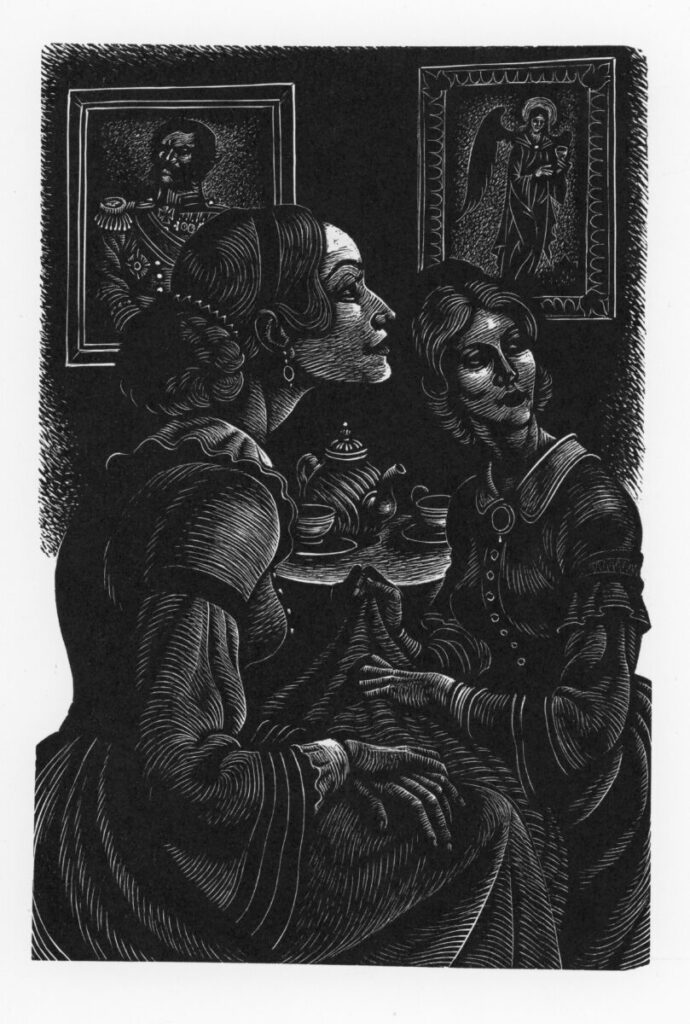
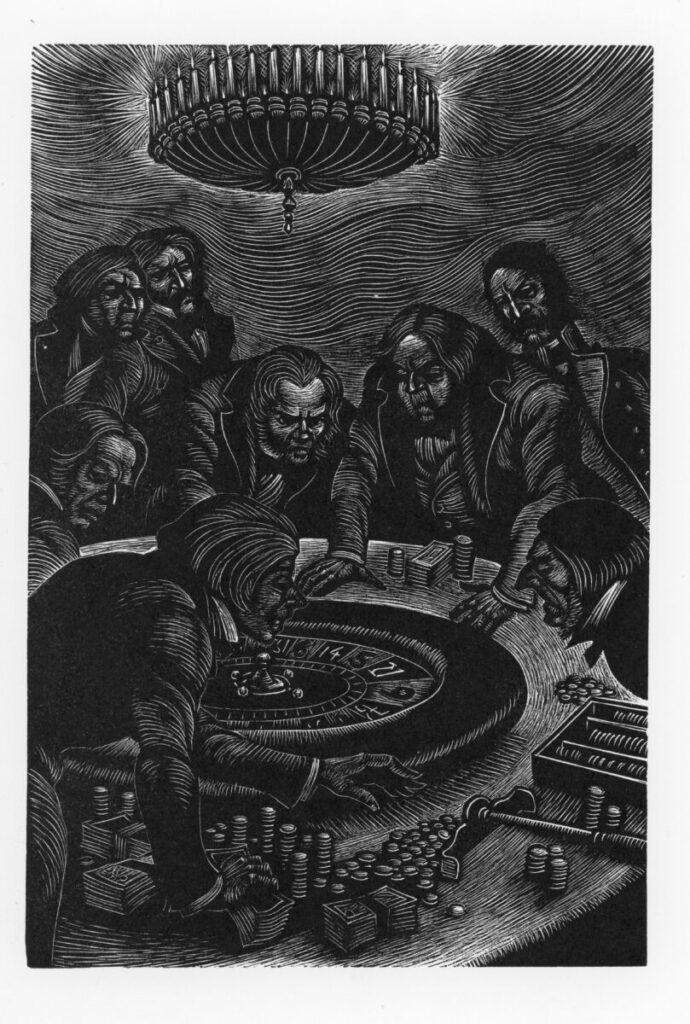

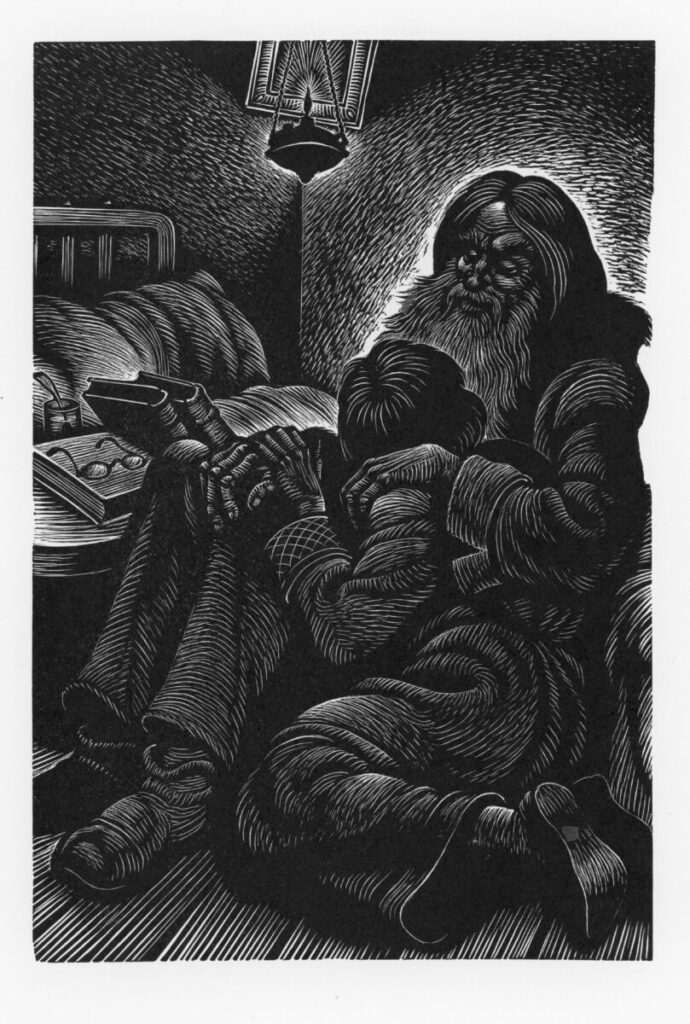
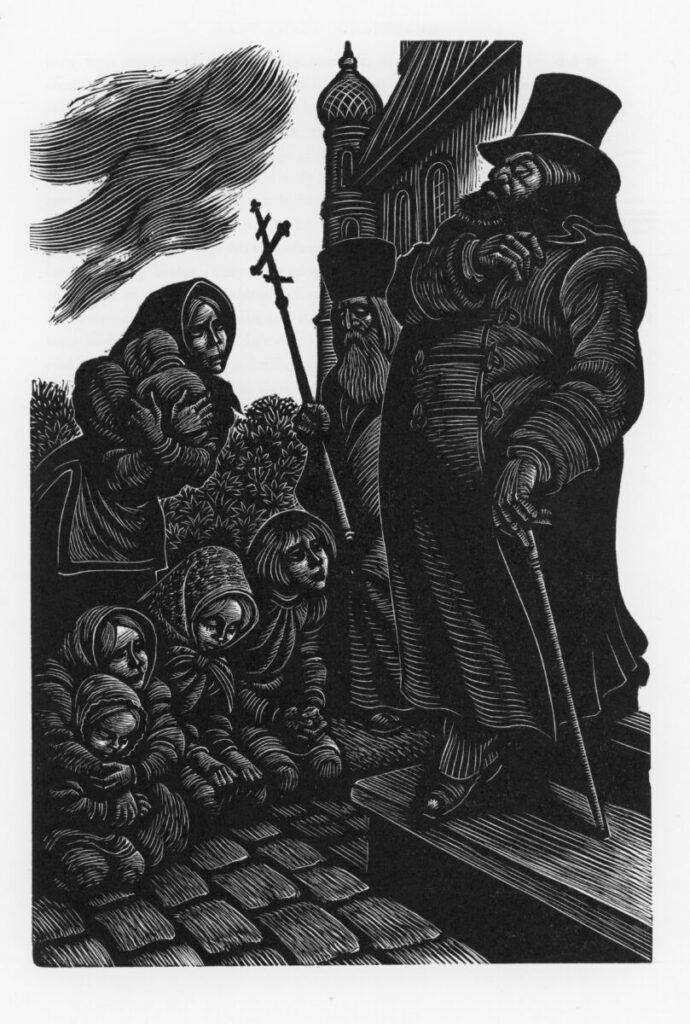

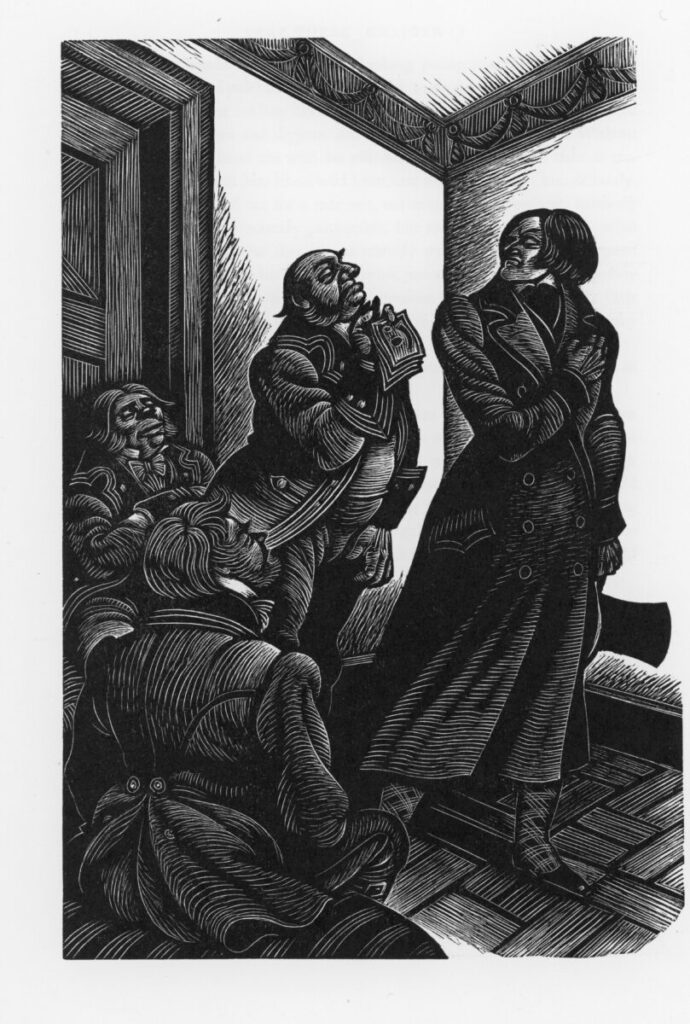

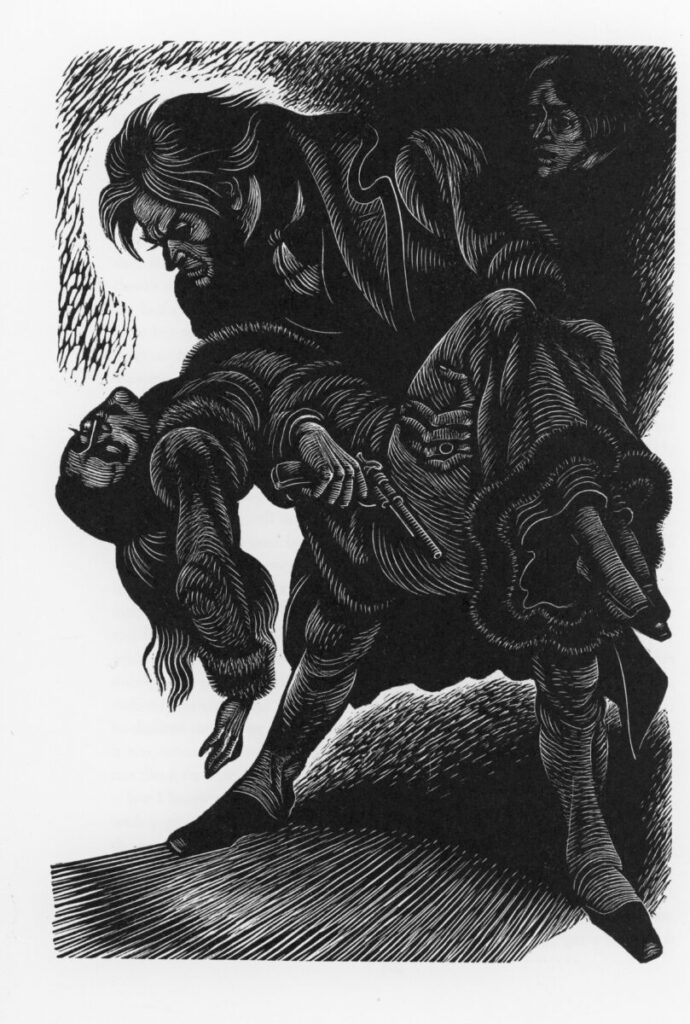
The titles of these full page woodcuts appear in the gallery.
Dillon returned home this morning and was able to join us for his favourite dinner of superlative bangers and creamy mash; firm carrots, cauliflower and broccoli, and meaty gravy with which Jackie drank Hoegaarden and I finished the Malbec.